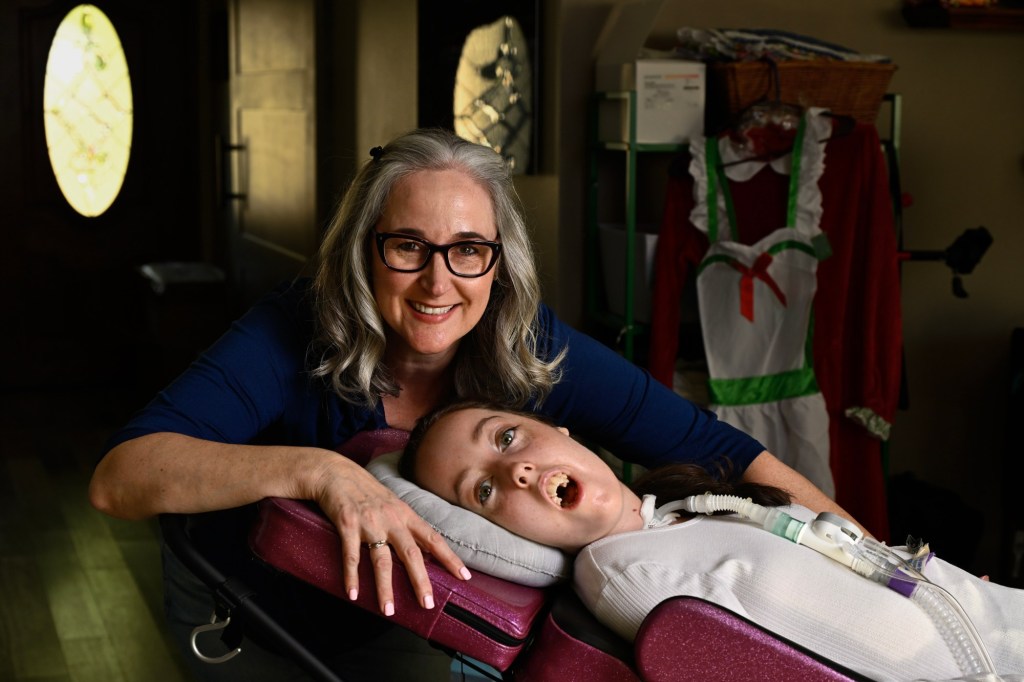A recent TEDx Talks series at Old Town Temecula Community Theater was themed “Disrupt,” described as offering “bold perspectives,” designed to “disrupt the way we think.”
One of the presenters was a mother-daughter duo, Kennedy and Jennifer Swann, and they were disrupting any misconceptions about the quality of life people with disabilities might be limited to.
Jennifer Swann spent a few minutes laying the groundwork for a life story that challenges any idea that people with severe disabilities can’t enjoy active, fruitful lives. Then, a bright spotlight illuminated the stage as Kennedy Swann was rolled forward in her wheelchair and positioned next to her mother.
“My name is Kennedy. I am 15 years old. I am a singer, a dancer, an actress, and a social butterfly,” the Brea Olinda High sophomore told the audience. “In case you haven’t noticed, I look a little different than you. I have SMA, which makes my muscles weak. But that doesn’t really matter to me because I still do what I love.”
Incidentally, she is believed to be the first person ever to deliver a TED Talk using Eyegaze, a speech-generating device operated by her eyes.
Kennedy Swann on a visit to the Grand Canyon. She said a trip to Paris is still on her bucket list. Courtesy of the Swann family
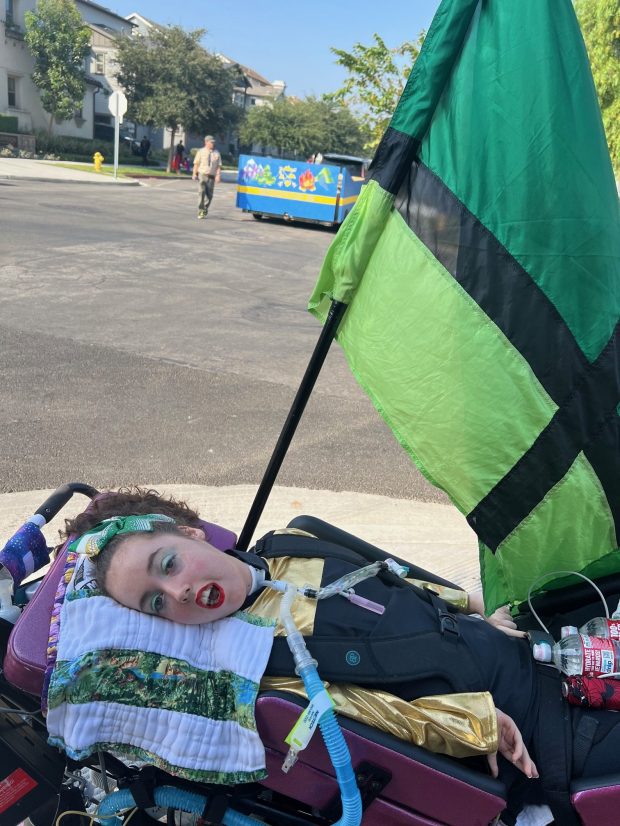
Kennedy Swann is a sophomore at Brea Olinda High and participates in the color guard. (Courtesy of the Swann family)
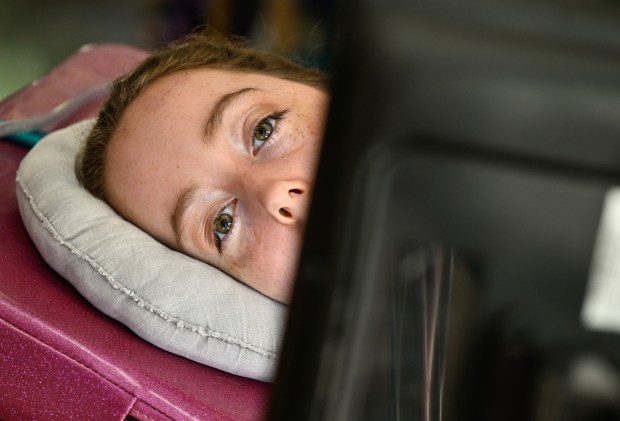
Brea Olinda High School 10th grader Kennedy Swann uses her eyes to control a device she uses to communicate in Brea, CA, on Thursday, Oct. 16, 2025. Kennedy Swann was diagnosed with Spinal Muscular Atrophy (SMA) at nine months old— a condition often described as the childhood version of ALS. Kennedy Swann joined her mother, Jennifer Swann, on stage during TEDx Temecula, where she was the first person to deliver a TEDx talk using a speech-generating device operated by her eyes. (Photo by Jeff Gritchen, Orange County Register/SCNG)
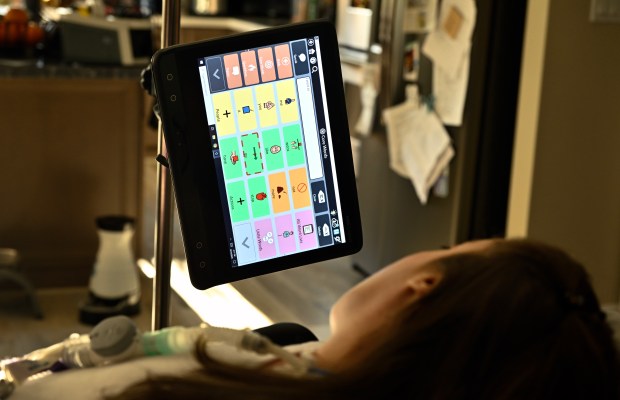
Brea Olinda High School 10th grader Kennedy Swann demonstrates a device she uses to communicate in Brea, CA, on Thursday, Oct. 16, 2025. Kennedy Swann was diagnosed with Spinal Muscular Atrophy (SMA) at nine months old— a condition often described as the childhood version of ALS. Kennedy Swann joined her mother, Jennifer Swann, on stage during TEDx Temecula, where she was the first person to deliver a TEDx talk using a speech-generating device operated by her eyes. (Photo by Jeff Gritchen, Orange County Register/SCNG)
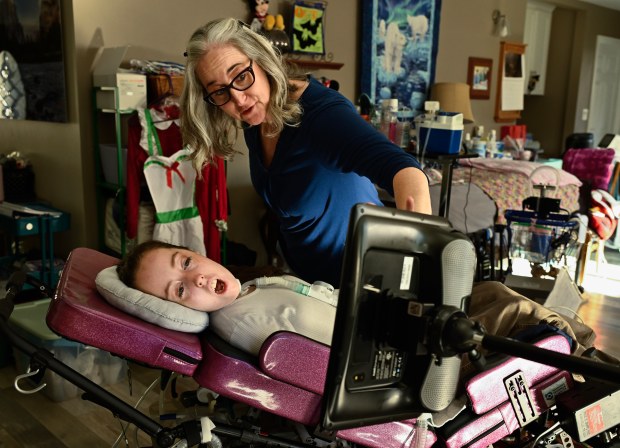
Brea Olinda High School 10th grader Kennedy Swann and her mother, Jennifer Swan, use her eyes to control a communication device at their home in Brea, CA, on Thursday, Oct. 16, 2025. Kennedy Swann was diagnosed with Spinal Muscular Atrophy (SMA) at nine months old— a condition often described as the childhood version of ALS. Kennedy Swann joined her mother, Jennifer Swann, on stage during TEDx Temecula, where she was the first person to deliver a TEDx talk using a speech-generating device operated by her eyes. (Photo by Jeff Gritchen, Orange County Register/SCNG)
Show Caption
1 of 5
Kennedy Swann on a visit to the Grand Canyon. She said a trip to Paris is still on her bucket list. Courtesy of the Swann family
At 9 months old, Swann was diagnosed with spinal muscular atrophy, a progressive, terminal neuromuscular condition, often described as the childhood version of ALS, commonly known as Lou Gehrig’s Disease.
She was unable to speak, needed a machine to help her breathe and a feeding tube. She would require 24-hour care, her parents learned, including respiratory treatments multiple times a day.
Even a common cold could be deadly.
“We didn’t leave the house a lot unless it was outdoors in well-ventilated areas, and we were very selective about who we let in our house,” Jennifer Swann told the audience. “We missed a lot of family gatherings. We didn’t know if she would see her second birthday.”
Jennifer Swann said she experienced firsthand what medical experts have pointed out for years: Caregivers are often anguished by feelings of hopelessness and devolve into emotional exhaustion.
Then, 12 years ago, she was sitting in a pediatric ICU room with her daughter when Jennifer Swann said she had a lightbulb moment.
“I got a crazy idea,” she said. “What would it be like for my family to go on a Disney Cruise?”
Doctors cautioned her that taking a child who didn’t have a stable airway on a cruise ship was a bad idea.
“I understood,” she said, “But the risk of continuing to do what we had been doing felt more dangerous.”
On the cruise with her parents and big brother, Swann was meeting Disney princesses and taking in the experience when her mother said she saw a version of her daughter she had not seen before.
Her daughter was “alive with joy, wide-eyed with wonder and loving every minute of it,” Jennifer Swann said.
“And suddenly, every decision I had ever made to contain her life in the name of safety felt completely backward,” Jennifer Swann said. “And I asked myself, why am I working this hard to keep her alive if I am not going to let her actually live?”
With proper planning and precautions, more Disney cruises and other trips followed, so did visits to Disneyland, playdates, dances, beach days and sleepovers, Jennifer Swann said.
Swann participates in the choir, musical theater and color guard at school.
Delivering the TEDx Talk, Swann told the audience how she loved meeting kids her own age.
“I make friends everywhere I go,” she said. “I once made a friend in the restroom at Disneyland. I love hanging out with friends and going to the mall, and I have a calendar of FaceTimes scheduled every month with people I know all over the country.”
The teen recalled the time when a respiratory virus was going around and she was told by her doctor that going to school would be too risky.
“I told him no,” she said. “I said there was a cute boy in my sixth period of class and I needed to see him every day. The doctor thought I was joking. I was not joking. So, we came to an agreement he could live with, and I stayed in school, and I did not get sick.”
Drawing on her experiences serving as the primary caregiver to a child with disabilities, and citing her daughter as her teacher, Jennifer Swann took a risk of her own.
She decided to leave her career as a constitutional law attorney, working for a federal judge, and design a curriculum for helping other parents of children with special needs.
Jennifer Swann went on to design the Flourish Method – a proprietary eight-step process to help guide parents from the point of overwhelming exhaustion to “peace, power, and possibility,” she said.
“The goal is to build a life they love right where they are,” Jennifer Swann said. “To empower parents to move beyond survival mode and embrace a life of possibility.”
Kennedy Swann’s bucket list remains full: Visit Paris, ride a roller coaster, FaceTime with Olivia Rodrigo and see Shawn Mendes in concert, just to name a few items.
“She is going to demand to do all the things that she wants to do,” Jennifer Swann said. “And, you know, if there are things that are a little outside the box, then she’s like, ‘Figure it out, mom.’”
Or as Kennedy Swann said: “Dare … sometimes you have to take a risk for what you want.”
Originally Published: October 24, 2025 at 2:35 PM PDT

